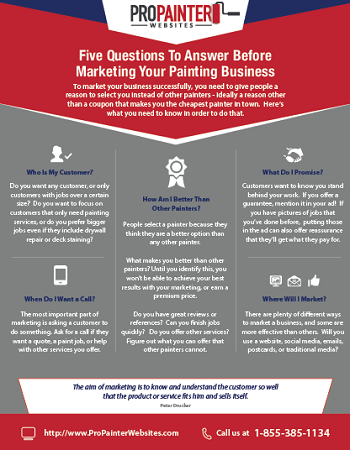Factors To Take Into Consideration For Industrial Exterior Painting By Season: Important Info You Ought To Have
Factors To Take Into Consideration For Industrial Exterior Painting By Season: Important Info You Ought To Have
Blog Article
Uploaded By-Korsholm Rodriquez
When you're planning a business outside painting project, seasonal elements can make or damage your results. You'll want to take into consideration how temperature level and moisture impact paint application and drying out times. Choosing the appropriate season can guarantee your paint adheres appropriately and lasts much longer. However which periods are genuinely the best for this sort of job? Let's discover the crucial elements that can affect your task's success.
The Impact of Temperature on Paint Application
When you're planning an industrial exterior painting project, the temperature level can substantially influence how well the paint sticks and dries out.
Ideally, you intend to paint when temperature levels vary in between 50 ° F and 85 ° F. If it's too cold, the paint might not treat correctly, resulting in concerns like peeling or splitting.
On the flip side, if it's as well hot, the paint can dry also rapidly, stopping proper bond and causing an uneven surface.
You should likewise consider the time of day; early morning or late afternoon uses cooler temperatures, which can be extra desirable.
Always check the supplier's referrals for the particular paint you're utilizing, as they commonly offer guidance on the suitable temperature level variety for ideal results.
Moisture and Its Result on Drying Times
Temperature level isn't the only environmental element that influences your business exterior painting project; humidity plays a considerable role also. High moisture levels can slow down drying out times significantly, influencing the overall quality of your paint task.
When the air is saturated with dampness, the paint takes longer to cure, which can bring about concerns like inadequate adhesion and a greater threat of mildew development. If you're repainting on a specifically humid day, be planned for extended wait times in between layers.
https://www.inquirer.com/real-estate/home/inq2/home-renovations-redecorating-modern-fixtures-fireplace-rehab-20230222.html to check neighborhood weather and strategy as necessary. Preferably, aim for moisture levels in between 40% and 70% for optimum drying.
Keeping these factors in mind ensures your job remains on track and delivers a long lasting finish.
Best Seasons for Commercial Exterior Painting Projects
What's the very best season for your industrial external paint projects?
Spring and very early autumn are usually your best choices. Throughout these seasons, temperatures are moderate, and moisture levels are usually lower, creating ideal conditions for paint application and drying.
Prevent summertime's intense heat, which can trigger paint to completely dry too rapidly, resulting in inadequate attachment and surface. In a similar way, winter's chilly temperatures can impede appropriate drying out and treating, taking the chance of the longevity of your paint work.
Aim for days with temperatures in between 50 ° F and 85 ° F for optimal outcomes. Keep in mind to check the local weather forecast for rainfall, as wet conditions can wreck your job.
Planning around these variables ensures your painting project runs efficiently and lasts much longer.
Conclusion
Finally, preparing your commercial external paint jobs around seasonal considerations can make a considerable difference in the outcome. By organizing work throughout the suitable temperatures and humidity degrees, you'll make sure much better attachment and drying times. interior painting hobart in mind to watch on neighborhood weather report and select the correct time of year-- springtime and very early fall are your best options. Taking these actions will help you attain a durable and professional finish that lasts.
